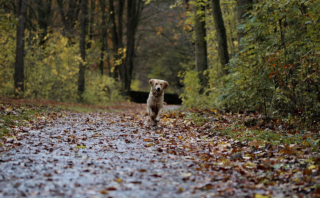Teach Your Pooch: 10 Fun Dog Training Tips for Kids
Dog training is an essential part of dog parenting. Whether a household has kids or not, this task helps to build a better bond between the family and the pet. For families with kids, dog training can also be an excellent opportunity for children to learn about responsibility and empathy. It instills in them a regard for living creatures and lets them understand that every action can have a reaction. Dog training for kids can be both fun and educational if done right.

Understanding the Basics
The first thing children need to know before they start training the dog is that dogs don’t think as humans do. Their brains do not process information in the same way. For them, it’s all about cues and reactions. Repeated actions and consistency reward the dog with affection or a treat, which encourage the dog to repeat the behavior. Kids need to understand that it can take time, so patience is key.
Beginning the Training
Training should always start from basic commands like sit, stay, come, lie down, and so on. Once your dog has mastered these, you can gradually move to more complex commands. Remember, training a dog requires patience and consistency, so the training sessions with the kids should be short, ideally only five to ten minutes at a time. Make sure to always end the training on a positive note.
Accuracy in Commands
When kids are training the dog, they should use clear and accurate commands. If multiple family members use different commands for the same action, it can confuse the dog. So ensure that everyone in the family uses the same word for each command. Also, have your kids use a firm but loving tone so that the dog takes the commands seriously.
Montessori-inspired Dog Training
For kids, it’s beneficial to follow the Montessori Method for dog training. It includes creating an environment where kids, dogs, and adults co-exist harmoniously. The Montessori way prioritizes respect for the dog, which means understanding its basic needs and ensuring they are met. This could be a part of the child’s responsibilities. Montessori also recommends role-playing where kids pretend to be dogs, understanding how dogs might respond to their tone, body language, and gestures.

FAQ
Is dog training safe for my child?
Yes, dog training is completely safe for children, given that an adult is present during the sessions to supervise. Using a gentle training method and ensuring the child respects the dog’s boundaries can prevent any potential mishaps.
Do all dogs respond well to training conducted by kids?
Most dogs will respond well to kids since canines tend to be loving and patient. But it depends on the dog’s temperament and the child’s age and maturity level.
Will dog training help my shy child come out of his shell?
Absolutely. Dog training requires a certain level of assertiveness and leadership. By leading training sessions, your child can get comfortable with exerting authority and build their confidence.
Can dog training sessions replace my child's exercise routine?
Dog training sessions are active, but they should supplement not replace, regular playtime and exercise. Dog training requires mental effort from your child and physical effort from your dog, so mix training with fun, active games.
How frequently should kids train the dog?
Initially, short frequent sessions of five to ten minutes each, multiple times a day, can be more effective. As the dog becomes more skilled, the sessions can be less frequent and a bit longer if the child’s attention span allows.
Conclusion
In conclusion, dog training can be a fun, educational experience for kids, teaching them responsibility and fostering their empathy towards other beings. It is crucial, however, to supervise these sessions, ensuring both the child and dog’s safety. Children should learn to command respect without instilling fear, and dogs should be praised as they make progress. A rewarding dog training experience can fuel lifelong bonds between the child and the pet, making the time and effort worthwhile.



